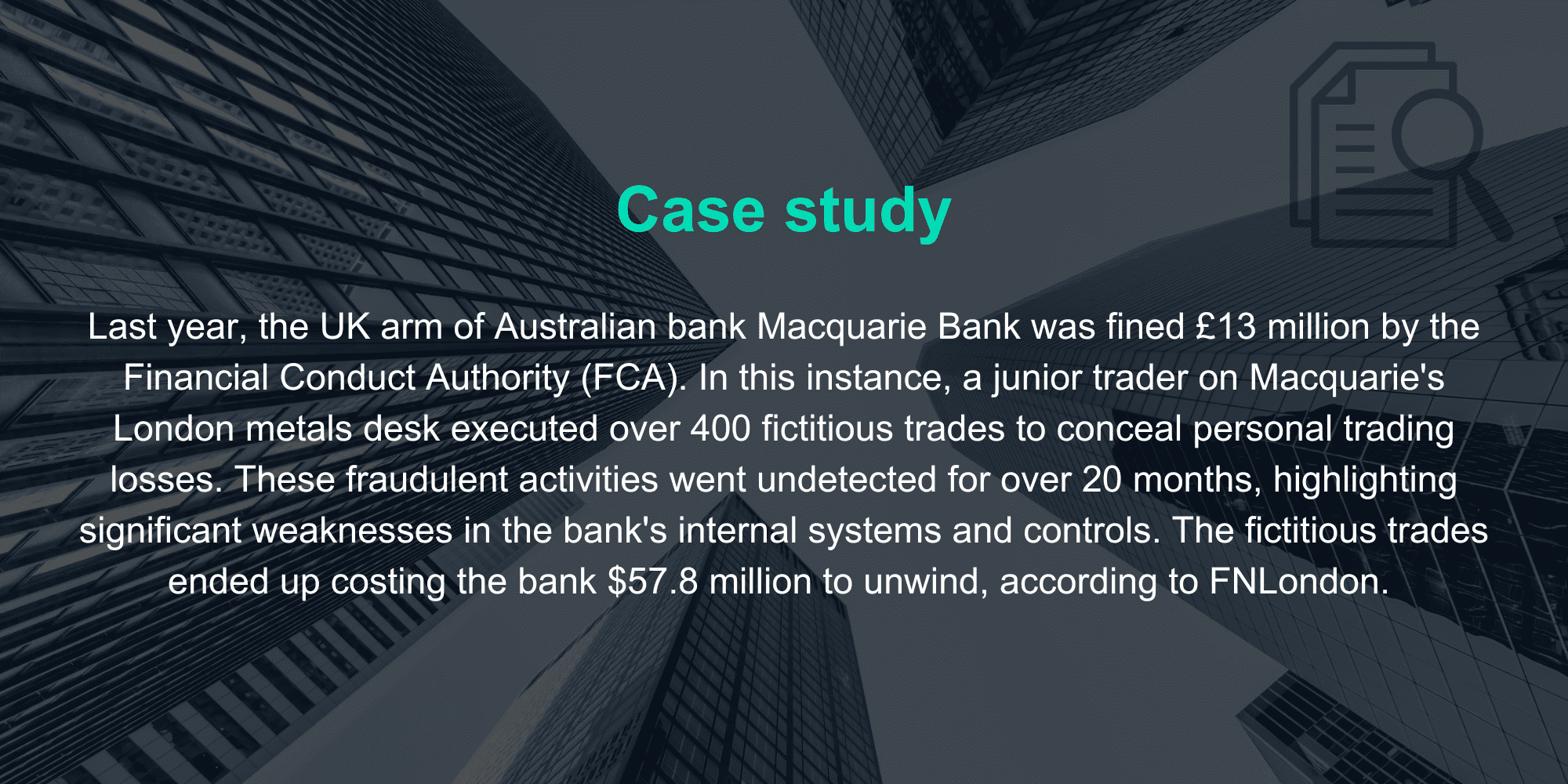
Merchant survey 2025: Navigating the payment innovation divide
A 2025 survey of UK retailers reveals how payment challenges and innovation priorities are shaping merchant strategies across the sector.

February 6 2025
by Payments Intelligence
What is this article about?
The Economic Crime and Corporate Transparency Act 2023, specifically the “failure-to-prevent fraud” offence, and outlines how businesses can mitigate fraud risks.
Why is it important?
It highlights new corporate responsibilities, significant penalties for non-compliance, and the businesses need to implement strong fraud prevention measures to protect their financial and reputational standing.
What’s next?
Businesses must proactively assess fraud risks, implement adequate procedures, leverage technology for fraud detection, and foster a culture of compliance to avoid regulatory penalties.
On 6 November 2024, the government released its guidance to organisations on the offence of failure to prevent fraud, introduced as part of the Economic Crime and Corporate Transparency Act 2023 (ECCTA). This legislation represents a significant shift in corporate accountability, aiming to strengthen the UK’s legal framework against financial crime.
The ECCTA is designed to enhance corporate transparency, combat economic crime, and impose stricter responsibilities on businesses to prevent fraud within their operations. The failure-to-prevent fraud offence ensures that organisations can no longer claim ignorance when fraud is committed by employees, agents, or subsidiaries acting on their behalf.
With fraud becoming one of the most prevalent economic crimes in the UK, this act is a response to growing concerns over corporate misconduct, financial misrepresentation, and economic crime loopholes. The introduction of severe penalties—including unlimited fines—highlights the government’s commitment to ensuring businesses implement robust anti-fraud measures and prioritise ethical governance.
For companies operating in the UK, understanding the implications of this legislation is critical. Compliance requires proactive fraud risk assessment, the implementation of preventive procedures, and a culture of accountability. This article explores the key provisions of the Act, the risks businesses must address, and the steps required to mitigate potential liabilities.






The Economic Crime and Corporate Transparency Act 2023 introduces a range of measures aimed at strengthening corporate responsibility and reducing economic crime in the UK. Among its key provisions is the failure-to-prevent fraud offence, which seeks to ensure that organisations actively implement safeguards against fraudulent activities within their operations. This section explores the core elements of the Act, including its scope, applicability, and the obligations it places on businesses.
One of the key provisions of the Act is the “failure-to-prevent fraud” offence, designed to hold organisations accountable, for example, if an employee or associate commits fraud for the organisation’s benefit. While the offence primarily applies to large UK companies and partnerships, smaller entities may also come under scrutiny depending on their activities. The issue of fraud is growing in the UK, with the average monetary loss per corporate fraud case being £21,433 in Q2 2023, the highest among all fraud types.
The offence applies to large organisations, this is defined by meeting two out of the three following criteria:
This threshold tries to focus on entities with significant economic influence, though smaller organisations may still face scrutiny if their activities raise concerns. The penalties for firms who are unable to meet the requirements are as follows:
The primary objectives of the 2023 Act include:
Preventing and detecting economic crime: The Act seeks to close loopholes in existing legislation and give enforcement agencies greater powers to investigate and prosecute financial crimes such as fraud, money laundering, and corruption.
Increasing corporate accountability: By introducing the failure-to-prevent fraud offence, the Act ensures that businesses take responsibility for fraud committed within their organisations, even if senior leadership was not directly involved.
Enhancing corporate transparency: Strengthening Companies House oversight, requiring greater scrutiny of company registrations and preventing misuse of UK corporate structures by criminals.
Improving law enforcement capabilities: Giving agencies such as the Serious Fraud Office (SFO) and National Crime Agency (NCA) enhanced investigative powers, including stronger tools for seizing assets linked to economic crime.
Fraud remains one of the most significant threats to businesses, affecting financial stability, stakeholder trust, and regulatory compliance. The failure-to-prevent fraud offence was introduced to ensure that organisations proactively implement measures to detect and deter fraudulent activities. This section outlines the key aspects of the offence, including what constitutes a failure, how businesses can be held liable, and the necessary steps to mitigate risk.
Under the Act, an organisation commits an offence if a person associated with the organisation commits fraud intending to benefit the organisation; this could be an employee, agent or subsidiary, for example.
It would also include a situation whereby an organisation fails to implement “reasonable procedures” to prevent such fraud.
The types of fraud covered under the offence include false accounting, fraudulent trading, cheating the public revenue, or any other offence also covered by the Fraud Act 2006.
There are ways in which firms can avoid prosecution if they’re able to demonstrate an adequate procedure in place to prevent the fraud from occurring. The Government has issued guidance outlining some core principles businesses should follow, these include:
Effectively managing fraud risk requires organisations to proactively identify potential weaknesses, implement strong internal controls, and foster a culture of compliance. By conducting thorough risk assessments, businesses can pinpoint the areas most susceptible to fraud and develop strategies to mitigate exposure. The following section highlights common organisational vulnerabilities that fraudsters may exploit, as well as the importance of continuous monitoring and improvement.
Naturally, every organisation has areas of vulnerability. In the case of most, fraud risks emerge from routine processes and relationships. Financial operations, such as accounts payable and receivable, are a prime target for fraudsters who may exploit weaknesses to manipulate invoices, divert funds, or process unauthorised payments.
Meanwhile, third-party relationships, such as those with contractors, vendors, or agents, pose significant risks if proper due diligence and oversight mechanisms are not in place and followed.
Technology has further expanded the potential for vulnerabilities, for example, weak cybersecurity measures, outdated systems, or a lack of controls over digital access can provide an entry point for cybercriminals to manipulate financial data or steal the sensitive information of consumers. This risk becomes exacerbated for firms operating in a digital-first environment.
Conducting a risk assessment must be a continual process for firms looking to avoid repercussions. Organisations can ensure their defences remain as robust as possible by regularly reviewing operations, assessing third-party relationships, and monitoring evolving threats like cybercrime.
Most importantly, a well-documented risk assessment forms part of the “adequate procedures” defence required under the Act, giving businesses a strong footing should their practices come under regulatory scrutiny.
Ultimately, assessing risk is not just about avoiding the legal penalties on offer; it’s about safeguarding organisations against financial loss, reputational harm, and operational disruption.
Failure to comply with the Act will likely result in significant financial penalties for firms. This will come alongside reputational damage and legal consequences. While the Act does not impose criminal liability on individuals within the organisation (unless they were personally involved in the fraud), the financial and operational impact of a conviction can be severe.
Enforcement agencies, such as the Serious Fraud Office (SFO) and the FCA, have been granted increased powers to investigate and prosecute organisations that fail to meet their obligations under the Act.

Under the terms of the Act, firms can avoid liability for the failure-to-prevent fraud offence if they can demonstrate that they have “adequate procedures” in place. The government has outlined six guiding principles to help firms develop these procedures, ensuring they are tailored to the organisation’s size, complexity, and risk profile.
These principles emphasise proportionality, strong leadership, thorough risk assessment, due diligence, effective communication, and ongoing monitoring. By following these guidelines, organisations can not only ensure that they are compliant but also build a more robust culture of fraud prevention that safeguards their reputation and operations. They are as follows:
Adequate procedures should be proportionate to the size, nature, and complexity of the organisation in question. For large, multinational corporations, this might mean sophisticated fraud detection systems and detailed compliance programmes. For smaller firms, simpler measures such as basic due diligence and robust financial controls may be sufficient. The key is to implement controls that match the organisation’s risk profile without being overly burdensome.
A clear directive from Leadership must set the tone for fraud prevention. This will include promoting a culture of integrity, actively supporting anti-fraud measures, and ensuring that fraud prevention is embedded in the organisation’s values and operations. A visible commitment from senior management will help to ensure that anti-fraud policies are taken seriously across the entire organisation.
A thorough and regular fraud risk assessment is the foundation of any effective prevention strategy. Firms are advised to identify the areas where they are most vulnerable to fraud, taking into account the nature of their operations, the industries in which they operate, and the associated persons acting on their behalf. These assessments should inform the backbone and development of tailored policies and procedures.
Due diligence procedures play a pivotal role and are essential for understanding who an organisation is dealing with—whether employees, agents, suppliers, or customers. Proper background checks, monitoring of third-party activities, and ongoing evaluation of high-risk relationships can all help to prevent fraudulent activity from slipping through the cracks. This will be especially important in industries with complex supply chains or significant third-party involvement, for example.
Firms’ employees must be made aware of all anti-fraud policies as well as any relevant third-parties. Training programmes play a critical role in ensuring company staff understand their individual responsibilities, can identify fraud risks and know how to respond if suspicious activity is detected. Open communication will help firms to foster a culture where employees feel confident reporting concerns.
Fraud prevention is not a static process, meaning organisations must regularly monitor and review their procedures to ensure they remain effective in the face of evolving risks and operational changes. This could involve auditing controls, assessing the impact of new technologies, or adapting to changes in regulatory requirements.
While policy plays a major role in preventing fraud, leveraging technology, partnerships and best practices to stay ahead of evolving threats. The failure-to-prevent element of the Act means firms must ensure they have the right tools to support their compliance efforts.
It is advised that organisations should leverage a combination of fraud detection solutions, compliance frameworks, and training resources to build a robust fraud prevention strategy.
The failure to prevent fraud offences under the Economic Crime and Corporate Transparency Act has undoubtedly marked a significant shift in corporate accountability. Naturally, this means firms must place greater responsibility on organisations to prevent fraud before it happens.
Compliance has shifted to no longer being a case of simply reacting to fraud, but needing more proactive approaches from firms, integrating robust procedures, structured approaches and a firm culture of integrity at every level of the business.
By conducting comprehensive fraud risk assessments, implementing effective monitoring tools, and fostering strong leadership commitment, firms can significantly reduce their exposure to financial crime and regulatory penalties. Leveraging tools such as AI-driven fraud detection, cybersecurity solutions, and industry collaboration strengthens defences and ensures fraud prevention strategies remain agile in an evolving risk landscape.
Measuring success in this space is no longer about avoiding the legal consequences of failing to prevent fraud, however creating an environment where fraud cannot thrive. A business that prioritises ethical decision-making, encourages whistleblowing, and invests in fraud awareness training will benefit in the long term.
With regulatory scrutiny increasing and fraud tactics becoming more sophisticated, businesses that take early, decisive action will be best positioned to navigate the challenges ahead

A 2025 survey of UK retailers reveals how payment challenges and innovation priorities are shaping merchant strategies across the sector.

UK SME survey shows open banking intrigues merchants with faster, cheaper payments, but gaps in awareness and security fears slow adoption.

The Bank of England’s offline CBDC trials show it’s technically possible—but device limits, fraud risks, and policy gaps must still be solved.
The Payments Association
St Clement’s House
27 Clements Lane
London EC4N 7AE
© Copyright 2024 The Payments Association. All Rights Reserved. The Payments Association is the trading name of Emerging Payments Ventures Limited.
Emerging Ventures Limited t/a The Payments Association; Registered in England and Wales, Company Number 06672728; VAT no. 938829859; Registered office address St. Clement’s House, 27 Clements Lane, London, England, EC4N 7AE.







Log in to access complimentary passes or discounts and access exclusive content as part of your membership. An auto-login link will be sent directly to your email.

We use an auto-login link to ensure optimum security for your members hub. Simply enter your professional work e-mail address into the input area and you’ll receive a link to directly access your account.
Instead of using passwords, we e-mail you a link to log in to the site. This allows us to automatically verify you and apply member benefits based on your e-mail domain name.
Please click the button below which relates to the issue you’re having.
Sometimes our e-mails end up in spam. Make sure to check your spam folder for e-mails from The Payments Association
Most modern e-mail clients now separate e-mails into different tabs. For example, Outlook has an “Other” tab, and Gmail has tabs for different types of e-mails, such as promotional.
For security reasons the link will expire after 60 minutes. Try submitting the login form again and wait a few seconds for the e-mail to arrive.
The link will only work one time – once it’s been clicked, the link won’t log you in again. Instead, you’ll need to go back to the login screen and generate a new link.
Make sure you’re clicking the link on the most recent e-mail that’s been sent to you. We recommend deleting the e-mail once you’ve clicked the link.
Some security systems will automatically click on links in e-mails to check for phishing, malware, viruses and other malicious threats. If these have been clicked, it won’t work when you try to click on the link.
For security reasons, e-mail address changes can only be complete by your Member Engagement Manager. Please contact the team directly for further help.